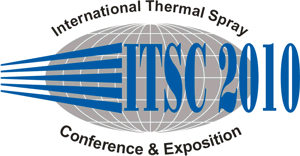| Abstract: |
The key to successful deposition in cold spraying is the adhesion of particles onto substrates or previously deposited particles. The cold sprayability of a powder on a given substrate is commonly characterized based on the critical velocity (Vcr) above which particle adhere to a specific substrate material. Finite element models have been proposed taking into account properties of materials (e.g., density, melting point, tensile strength, yield stress, thermal conductivity, specific heat, etc.) and physical conditions of impingements of particles (e.g., velocity, temperature, size, etc.). A Vcr is therefore predicted for each material based on these parameters and for specific deposition conditions. The predictions Vcr are in good agreement with experimental results. Above the Vcr, increasing the particle impact velocity is known to result in an increase of deposition efficiency. However, from one material to another, the deposition efficiency versus particle velocity curve behavior can differ significantly. Also, at the minimum particle impact velocity for obtaining maximum deposition efficiency the properties of the coating can be significantly different for titanium compared to nickel, aluminum or copper. One fundamental difference between these materials is their crystal structures. Ti is hexagonal close-packed while Ni, Al, and Cu are face-centered cubic materials. As a result, their deformability differs and Ti shows higher porosity than the others. Their deformation behavior depends on metallurgical properties. In this paper, we seek to determine the effects of metallurgical variables on the functionality of cold sprayability of pure titanium. Commercially pure titanium coatings were cold sprayed using different powder morphologies and particle size distribution and at process conditions resulting in a large range of particle impact velocity and substrate surface temperature. An in-depth characterization was performed on coatings, including mechanical, microstructural, and chemical analyzes. The results are discussed on the basis of metallurgical mechanisms for elevated temperature and high strain rate plastic deformation.
|
|
